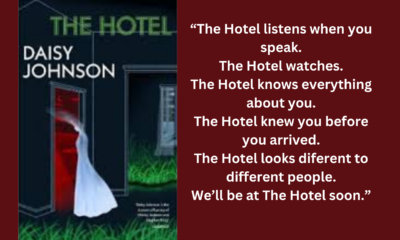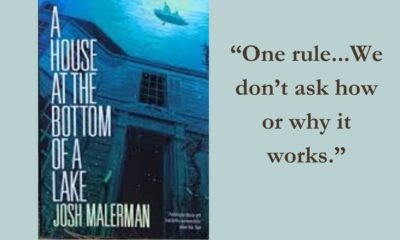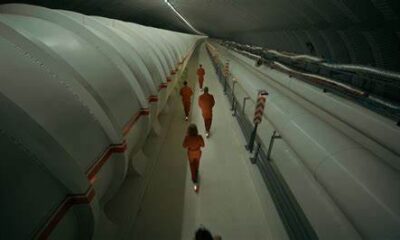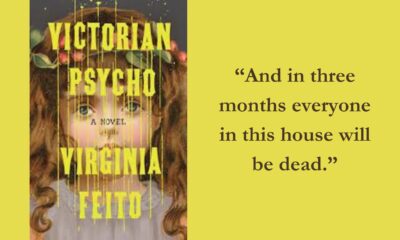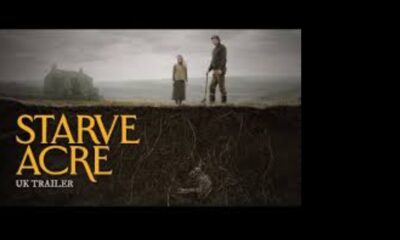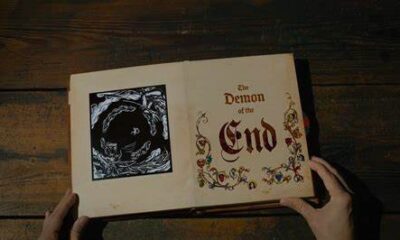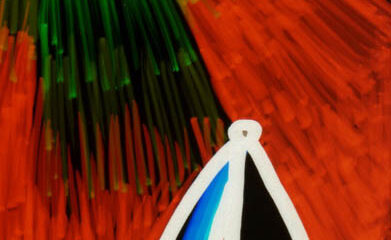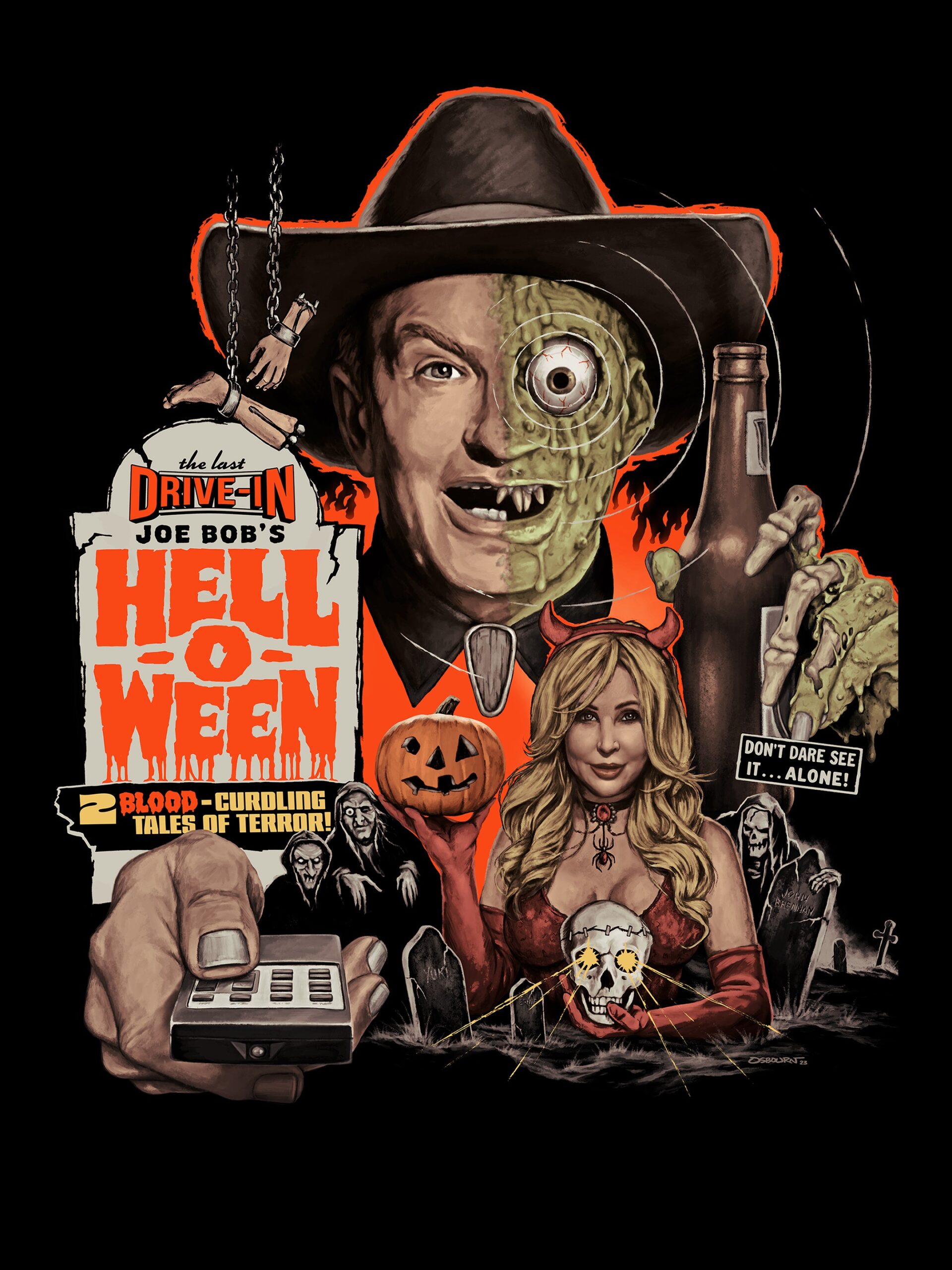
The Last Drive-In with Joe Bob Briggs: Darcy’s Helloween Special
More Videos
Published
1 year agoon
The Last Drive-In with Joe Bob Briggs returned for its annual Halloween (Helloween) special on October 20th. Joe Bob reins himself in and hands the ropes to the ever-capable Darcy the Mail Girl for the special. Special guest Danhausen provides additional demonic entertainment. The Drive-In is available on AMC+ and Shudder.
This week on The Last Drive-In, Joe Bob and Darcy return to present their annual Halloween special. Joe Bob’s Helloween delivers a gooey and blood-soaked experience with Lamberto Bava’s Demons 2 (1986) and Damien Leone’s All Hallows’ Eve (2013). For those crying foul about showing a sequel without showing the first film, Joe Bob previously hosted Demons (1985) during the original comeback marathon.
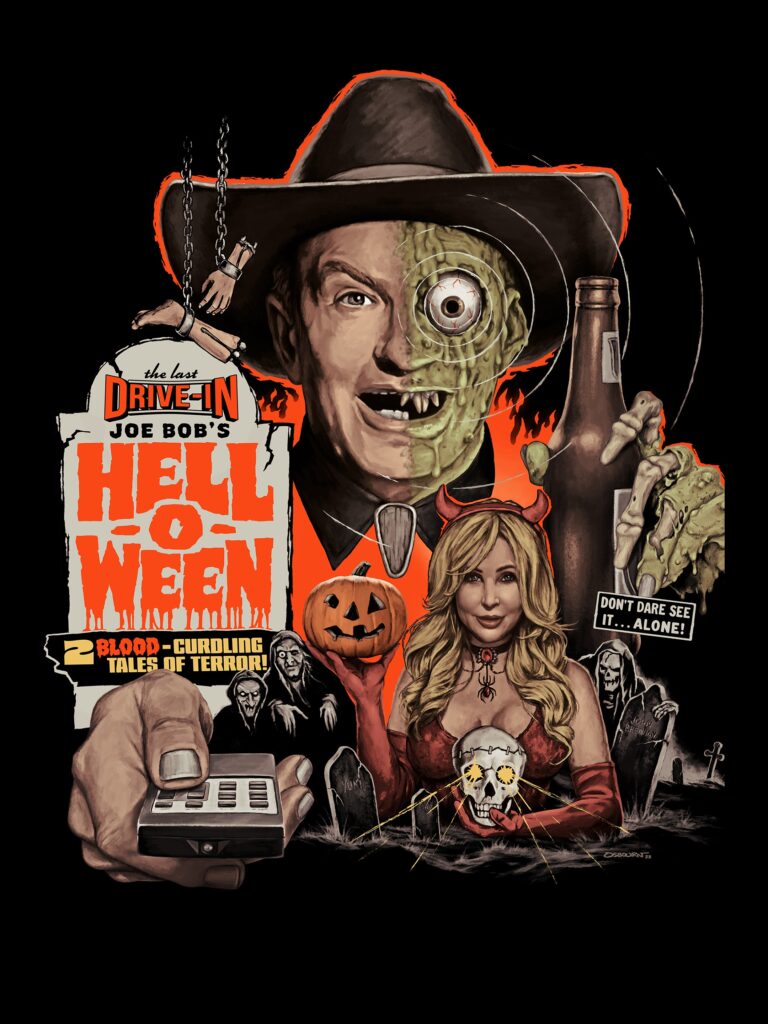
Hello-ween
Helloween opens with a phone call reminiscent of Scream (1996). Instead of Darcy being stalked by a masked killer, Joe Bob (from his safe space: Cracker Barrel) pleads with her to take control of the Halloween special. He admits to the myriad of ways he’s messed up the special before to convince her. These include getting drunk & angry, getting drunk & sad, and trying “to sell Angel (1983) as a Halloween movie.” He doesn’t even try to blame the booze for that one.
Darcy agrees to take the helm and presides over the fully decked-out set in a stunning devil costume. The decorations do not conform to any era or style and turn the trailer park into a proper homestyle haunt. However, Joe Bob’s chair is not in its place and he begrudgingly stands to deliver the introduction to Demons 2.
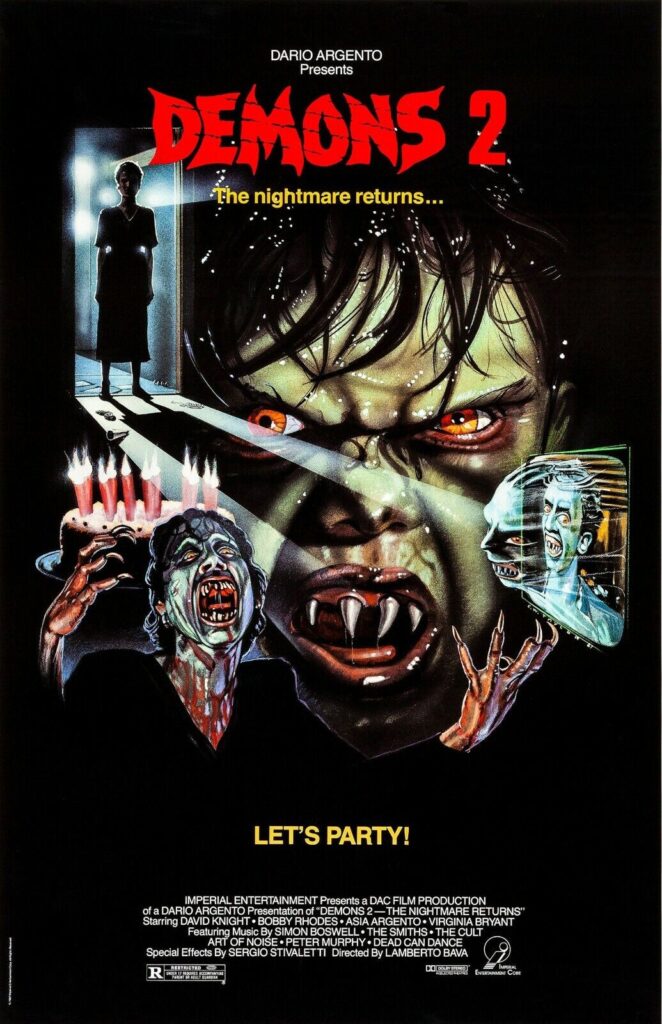
Demons 2 tells the story of a birthday party gone horribly wrong. When a demonic TV broadcast transforms birthday girl Sally (Coralina Cataldi Tassoni) into a grotesque monster, newlyweds Hannah (Nancy Brilli) and George (David Knight) attempt to escape their apartment building full of corrupted souls to save themselves and their unborn child.
The Drive-In Totals include but are not limited to: 64 undead bodies, 1 squealing gremlin, penis grabbing demon, TV monitor ax destruction and potted plant fu. The movie earns a full four stars from Joe Bob. Considering the film is Darcy’s pick, Joe Bob must be thrilled to present a movie he likes.
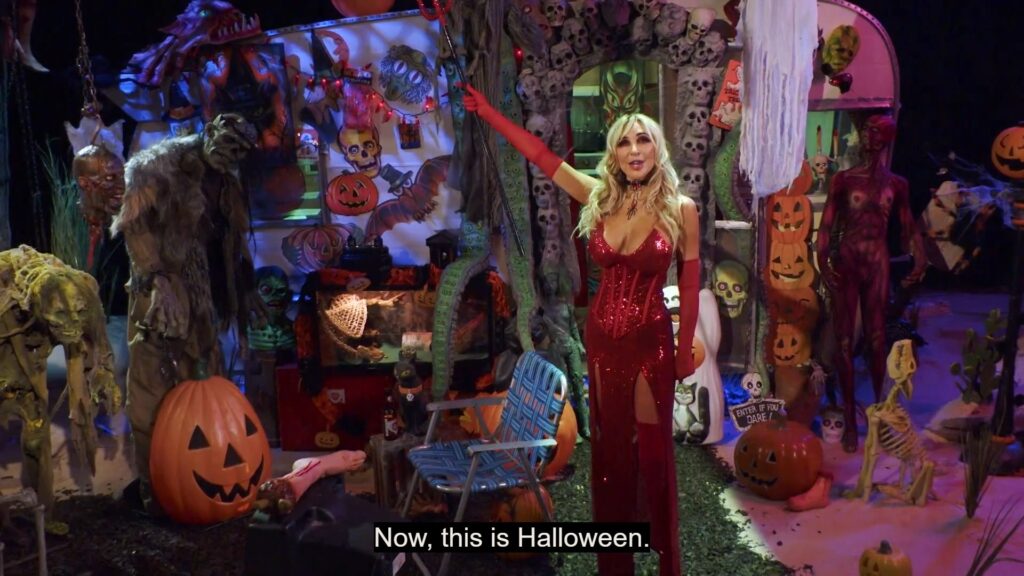
Ahem, It’s Hell-O-Ween
Joe Bob does his best to launch into a lecture about the history of Demons 2 when a cloud of smoke interrupts his train of thought. Darcy’s additions of musical stings and smoke machines brings repeated levity into the episode. It makes me a little sad knowing they probably won’t continue into the regular season.
After being interrupted, he remarks, “Darcy, I have never felt less in control of this show.” It’s a prophetic statement as none other than professional wrestler (and demon) Danhausen soon invades Helloween . Using a clever movie tie-in, he shoves his way through a TV set and into our hearts.
Despite the unconventional entrance, Joe Bob does his best to interview Danhausen throughout the segments. Danhausen unfortunately does not have much to offer in terms of Demons 2. “It’s very good. Very Evil. Very interesting.” He does bring, however, a rare Thuringian liquor called “aromatic.” Thuringia is apparently Danhausen’s home… plane of existence?
Joe Bob and Darcy down multiple shots of this strange drink and Danhausen tells Joe Bob his thoughts on the depiction of demons in the film. He yells in frustration, “They are movie demons!” He believes they are much more like zombies than actual demons. When Joe Bob asks what a real demon looks like, Danhausen rightfully appears hurt.
Drinking shots of Danhausen’s drink changes Joe Bob into a more lethargic and less controlling version of himself. It’s a fun depiction of Joe Bob handing control of Helloween over to Darcy and being along for the ride. When the Joe Bobhausen transformation is complete, it’s time for the real one to go. After Joe Bob most heinously accuses him of fakery, Danhausen chooses to shimmy through the airwaves to a hot tub party in Aspen.
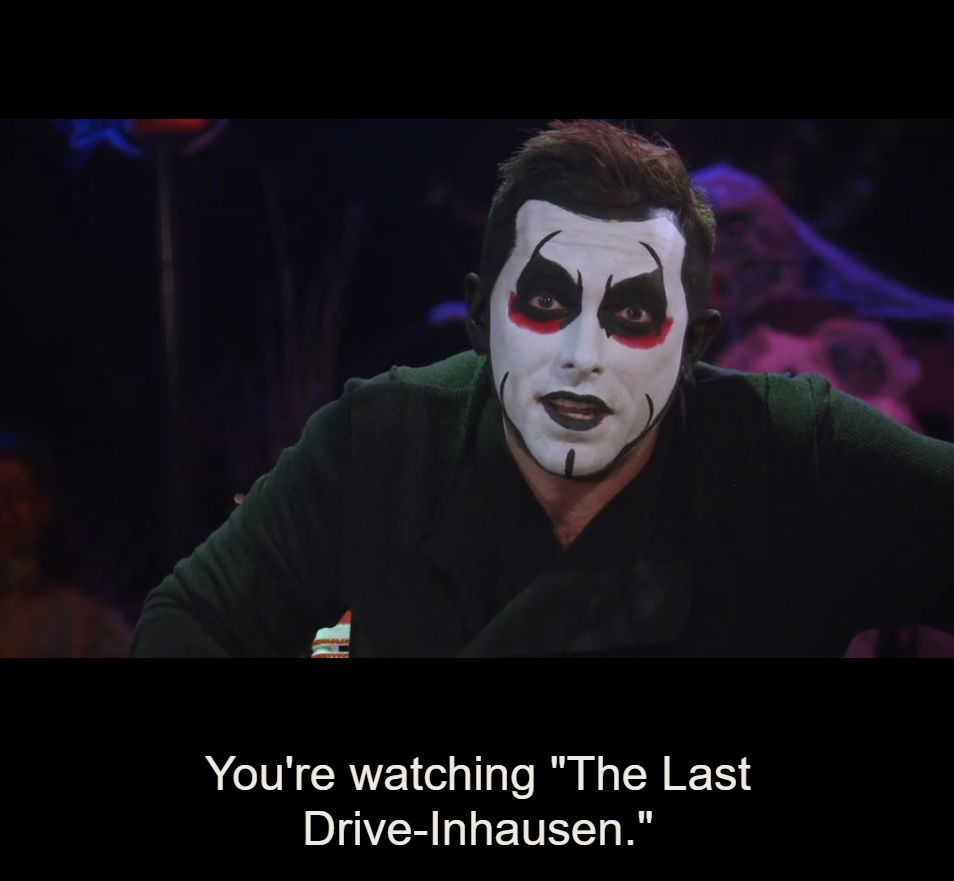
Pool Full of Liquor
When Joe Bob is able to power through the Thuringian liquor’s effects, he gives audiences the usual deep dive into the production and cast of Demons 2. Bava is a third-generation Italian filmmaker. He learned many of his skills from his father, the “Master of the Macabre,” Mario Bava. Previously working as an assistant director under Dario Argento for Inferno (1980) and Tenebrae (1982), the two reunited under Bava’s direction for Demons and Demons 2.
The film was a rushed production following the major, and slightly unexpected, success of Demons. It was filmed in seven months with a budget of $1.5 million and released unrated in the United States.
Many of the actors featured in the film, according to Joe Bob, are known for their roles within it. He says the characters George and Hannah, played by David Knight and Nancy Brilli respectively, are “just too boring for this world.” Bobby Rhodes as Hank is, however, “the real scene stealer,” of the film.
While Joe Bob and Darcy agree the screenwriters should have stuck with their original ending, they both enjoy the movie. It is a nonstop romp through a world that doesn’t make much sense, and it rips off at least five other movies, but it does it with pure 80’s style.
My rating for Demons 2:
 (4.3 / 5)
(4.3 / 5)
Haggis, Neeps and Tatties
The first piece of mail for the night comes all the way from Russell in Newburgh, Scotland. Joe Bob doesn’t seem too surprised by the distance. He says, “We have more fans in Scotland than all the rest of the UK.” Russell writes in hopes of the UK gaining more access to The Drive-In. Joe Bob seems more focused instead on bringing the Scottish holiday of Hogmanay to The Drive-In.
International licensing issues are probably a nightmare, but Russell brings up a valid point in Shudder’s lack of The Last Drive-In: Just Joe Bob episodes. Just Joe Bob allows tenacious viewers to match up commentary breaks with a legal version of the presented film. Unfortunately, these are no longer being released with any regularity.
Cowboy Ken and Demon Barbie
Darcy has been making comments about getting Joe Bob into a Ken costume all night, and she makes good when it comes time for the second movie of the night. More specifically, and aptly, a Cowboy Ken costume. She joins him as Demon Barbie, unfortunately without the full face of paint we saw on Joe Bobhausen.
Seemingly freed from the effects of demon liquor, Joe Bob launches fully into an educational rant on the history of Samhain and poppers. No, not those poppers. I know, Darcy was disappointed too. Dumping a pumpkins worth of toys onto the table, he challenges Darcy to a game. They argue about the rules as Joe Bob continues his lecture about Gaelic spirits and jump-scares.
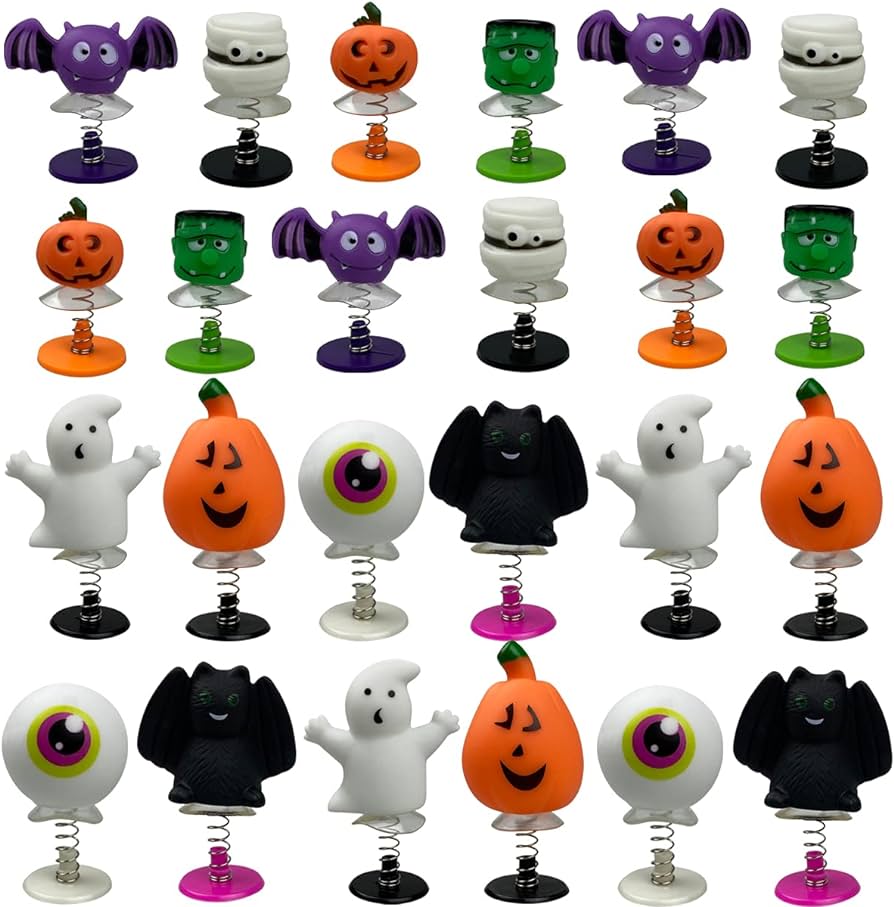
When he picks up an eyeball shaped popper, Darcy remarks, “That’s some Art the Clown type shit.” This is the cue he needs to finally introduce the movie. All Hallows’ Eve is an anthology horror set fittingly on Halloween night. Babysitter Sarah (Katie Maguire) and her charges Tia (Sydney Freihofer) and Timmy (Cole Mathewson) watch a VHS tape found in Timmy’s candy bag and unknowingly invite terror into their lives.
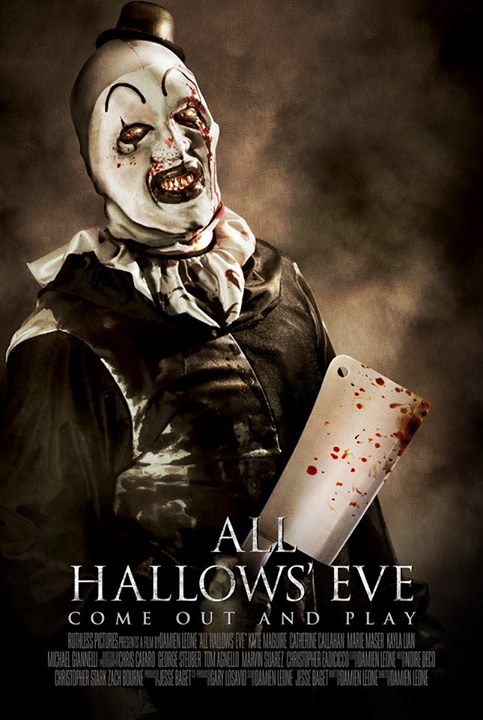
If you’ve seen Terrifier or Terrifier 2, you’re familiar with Leone’s blood splattered style of filmmaking. This film is no exception. The Drive-In Totals include but are not limited to: 1 bloody mud monster, stomach slicing with bloody fetus, monster-face skeleton army, gratuitous rotten egg vandalism and upchuck fu. “Four stars. Joe Bob says check it out.”
Barbie World
Joe Bob questions why he is wearing a Cowboy Ken costume because he feels Ken is the bad guy in the movie. Darcy corrects him and says Ken isn’t necessarily bad. He simply “represents the patriarchy,” she pauses before adding, “…perfect for you.” When Joe Bob feigns ignorance on what the patriarchy is, Darcy smartly tells him to “go read one of [his] books.”
This review isn’t the time nor the place for me to flex my degree in gender studies. Nor am I going to delve into the issue of misogyny within horror spaces. I do think it is important, however, to remind people that when you say things online – it isn’t only your intended target who reads your words.
Darcy has repeatedly stated she is confident in her position and knows her worth, but gender-coded insults towards her serve as a stark reminder that even spaces as inclusive as the horror community still have a ways to go.
‘Tis The Season
Despite Joe Bob’s hesitancy in his costume (don’t worry, you are Kenough), he is determined to give Darcy the Helloween she deserves. Producer Austin Jennings shoots down his idea of a trailer park bonfire with a quick, “Not on my set!” In response Joe Bob makes mention of the show’s new filming location by offering to burn down a The Walking Dead set for her. Unfortunately, none of this is in the budget.
Within the budget remains other great Samhain traditions, such as bobbing for apples and repeatedly mispronouncing Samhain. “It’s Halloween. We have to do annoying things.” He explains too many people have forgotten about the trick portion of the holiday. In perhaps his cruelest trick of the night, he offers Darcy candy corn that she can no longer eat. She puts out a plea for vegan candy corn, so if you know of any, let her know.
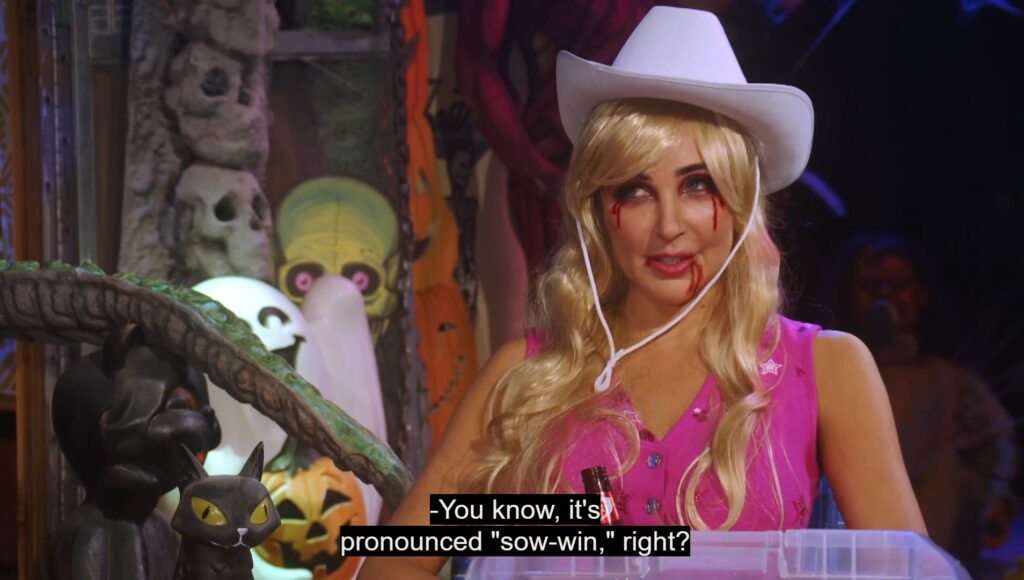
No Treats Here
Keeping the tradition of tricking people alive, although not the people, is Art the Clown. Joe Bob heaps praise on the first segment of All Hallows’ Eve, which was originally released as a short film. “If this was Damien Leone’s first movie, you can already see how talented he is.” Throughout the special, Joe Bob attempts to pathologize Art the Clown to explain his behavior.
This goes back to his feelings on Michael Myers from the AMC FearFest presentation of Halloween (1978). Sometimes evil is just evil, despite how little he likes that explanation. Art the Clown displays powers that are clearly otherworldly in nature, so it’s natural to assume his motivations cannot be explained by human motivations.
The second segment of the film was created specifically for All Hallows’ Eve, and Joe Bob describes it as “the part that drags in the middle.” Despite this, he loves the “goofy direction” it goes in. In my opinion, this segment does a better job of demonstrating Leone’s ability to build atmosphere and suspense than his special effect skills.
All Hallows’ Eve ends with the segment that set the Terrifier franchise in motion. Discussing whether or not Art the Clown can be considered a horror icon, Darcy says, “He’s a baby icon.” Joe Bob wonders why the film “doesn’t get more love from the hardcore fans.” He also praises the ingenuity Leone displays with twisting urban myths into full-on nightmares within this work.
If you’re currently on the fence about whether the Terrifier films are for you, All Hallows’ Eve makes for the perfect introduction to Art the Clown’s twisted world. My rating for this film:
 (3.7 / 5)
(3.7 / 5)
Stay Sick and Disgusting
Adam from Tennessee writes in for the second mail call of the night. Interestingly (or horrifyingly) enough, Adam credits watching Herbert West’s Re-Animator (1985) during the original marathon for his goal of becoming a doctor. He also says The Last Drive-In embodies the acceptance and comfort he finds in horror. Speaking from experience, I can say the Mutant Family is the most inviting and inclusive community I’ve ever encountered.
The letter itself is quite lengthy, but it does include one crucial line, “Halloween III is sick.” Perpetually unable to stream the 1982 classic, Darcy instead has the dance party she’s been asking for all Helloween. Fart the Clown (yes, Fart) flatulates a beat on the mic and the set is overrun with costumed crew and they break it down to a “royalty-free, parody version” of the Silver Shamrock song.
Including strobing lights without a warning was certainly a choice, and not one I recommend they do again, but the party is a perfect 2AM fever-dream send-off for Helloween. My rating for this special:
 (4.6 / 5)
(4.6 / 5)
Kait (she/her) haunts the cornfields of the Midwest after being raised in a small Indiana town built on sickness and death. She consumes all sorts of horror-related content and spits their remains back onto your screen. You can follow her on Twitter at @ KaitHorrorBreak, where she live tweets The Last Drive-In with Joe Bob Briggs and posts other spooky things.

You may like
Doctor Who
Identical: Yes. The Same: No – Exploring the World of AI Reconstructions in Doctor Who
Published
2 weeks agoon
March 19, 2025By
J M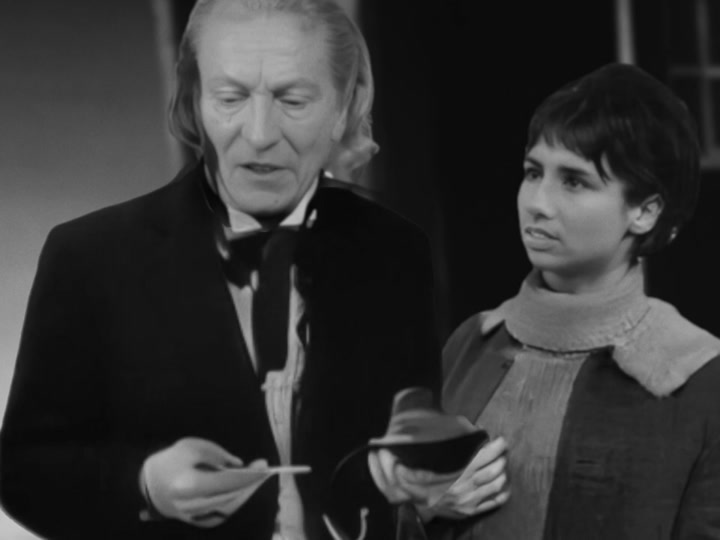
The second half of 2024 was a bit of slow for Doctor Who news. Ncuti Gatwa’s first season finished in June, and the Christmas special was months away. Comics and audio plays continued, and a Blu-Ray set of Season 25 was released – but that was all.
However, what was new and exciting was a spate of unofficial recreations of missing Doctor Who stories from the sixties. Re-animations of missing stories have occurred previously, both officially by the BBC and unofficially by fans. However, animation production time means it’s rare to have more than a few episodes a year. However within the space of six months, forty-four recreated episodes were released, with the promise of more to come.
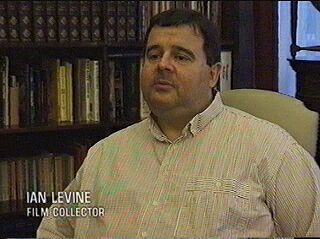
The reason how so many stories have been released so quickly is artificial intelligence (AI). These reconstructions are Generative AI, funded by professional songwriter, film producer, and fan, Ian Levine. This decision to make Doctor Who AI Reconstructions, to put it mildly, has been controversial online.
But is it worth it, in order to having otherwise missing stories returned to us? I’ve examined many of these Doctor Who AI reconstructions, and the discourse around them, to find out.
In Brief – Missing Episodes
A decent proportion of Doctor Who’s earliest years shockingly does not exist anymore. Doctor Who is one of the BBC’s biggest revenue raisers, and most famous show around the world. However it was not always the case.
When Doctor Who first began in 1963, the idea of keeping media was not really considered. Home video did not exist, and would not exist for two decades. Repeats were rare, due to the costs at the time to store old material and pay people involved in them. Also, old film presented a fire hazard. So it was often disposed of.
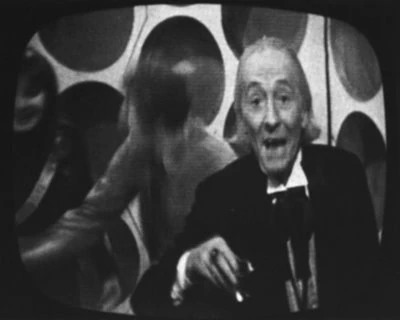
Despite this, Doctor Who is fairly lucky compared to other series. Firstly, fans at the time recorded the audio of each story. This means even the first ever Christmas Special – “A Feast of Stephen,” never broadcast internationally or repeated, still exists as an audio.
Doctor Who is also lucky because of only six seasons are not complete. In addition, of those six seasons, only half are missing only episodes from one or two stories. This allows us to get a feel for the early years of Doctor Who in a way fans of other series, like “Quatermass” and “The Avengers” aren’t able to. And part of the reason most of these early seasons survive is due to Ian Levine.
Who is Ian Levine?

Ian Levine professionally is a songwriter and DJ. He has written and produced records connected to such bands as Take That, Pet Shop Boys, Bananarama and Bucks Fizz. His total sales exceed 40 million records.
He is also well known as a prominent Doctor Who fan. There are many prominent Doctor Who fans. The series from 2004 onwards has been largely made by prominent Doctor Who fans of the 70’s and 80’s. Many of these fans contribute to Doctor Who in official ways. For instance, many older fans have written books, or audio plays. All three showrunners for the modern series would be considered prominent fans from the nineties. For Ian Levine, his main contribution is seeking to find and restore missing episodes of Doctor Who.
This work started in 1978 where Levine reportedly requested the permanent halting of old episodes of Doctor Who. At the time the idea of home video was being considered, leading to more reasons to keep old film. Levine also claimed to have rescued the first ever Dalek story from being sent into a furnace. Following this, he began purchasing private copies of the remaining stories, and attempting to return them to the BBC.
He also connected with the Doctor Who Production Team of the eighties in other ways. This included composing the theme tune for the spin-off series “K-9 and Company”, and the protest/charity album “Doctor In Distress.” His was also consulted about continuity during seasons eighteen to twenty-two.
However, he also gained a notorious reputation as obsessive in an unappealing way. During the 1985 Doctor Who hiatus, Levine was encouraged by Producer Jon Nathan-Turner to use protest the decision. Levine argued against the decision on television, and smashed his television with a hammer, and inviting newspapers to photograph it.
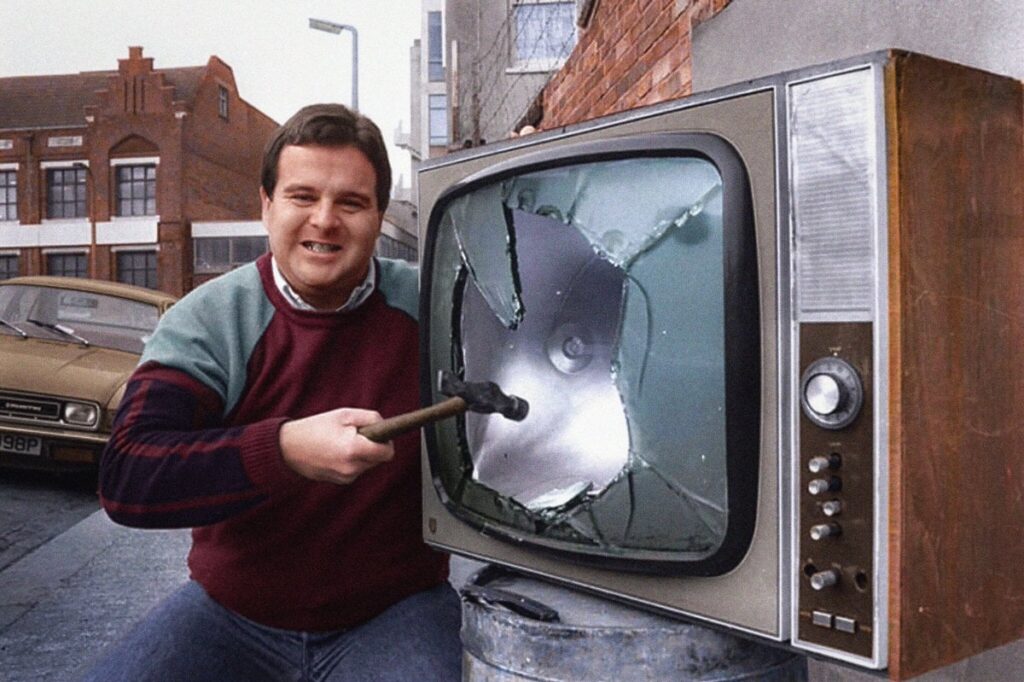
So he is fan who has both done great things, but also sought notoriety and negative attention.

More recently, Levene has worked with animating missing or incomplete episodes. This started in 2010 with “Mission to the Unknown.” This was not allowed to be shared or sold due to it being made without BBC authorization. In 2013, Ian hired an animated reconstruction of the unfinished story “Shada.” This version used pre-existing footage and new audio to create a finished product he hoped could be licensed. However, the BBC chose not to. Instead they made their own animated version that was released four years later.
- Join the Doctor (Tom Baker), Romana (Lalla Ward), and K-9 (voiced by David Brierley) as a visit to a Time Lord living incognito on Earth leads to a desperate race to a distant prison planet
- A BBC strike halted filming of this never-broadcast Baker six-episode serial written by “The Hitchhiker’s Guide to the Galaxy” author Douglas Adams
- Christopher Neame, Victoria Burgoyne co-star
Last update on 2025-03-16 / Affiliate links / Images from Amazon Product Advertising API
Subsequently, Levine made comments regarding Jodie Whittaker as the first female Doctor which were deemed by many to be sexist. Levine responded by publicly quitting the fandom, though later created his own private Doctor Who Facebook group.
This group has now become the location where his AI recreations he has funded and received donations for are shared.
The Doctor Who AI Reconstructions – How to Access
The Facebook Page: “Ian Levine’s Facebook Group” requires an agreement to two questions to join. Firstly, you must agree to respect the right to criticize Jodie Whittaker. Secondly, you must recognise this is Ian Levine’s group for sharing his opinions on Doctor Who. Agree to all this, and you’re allowed in.
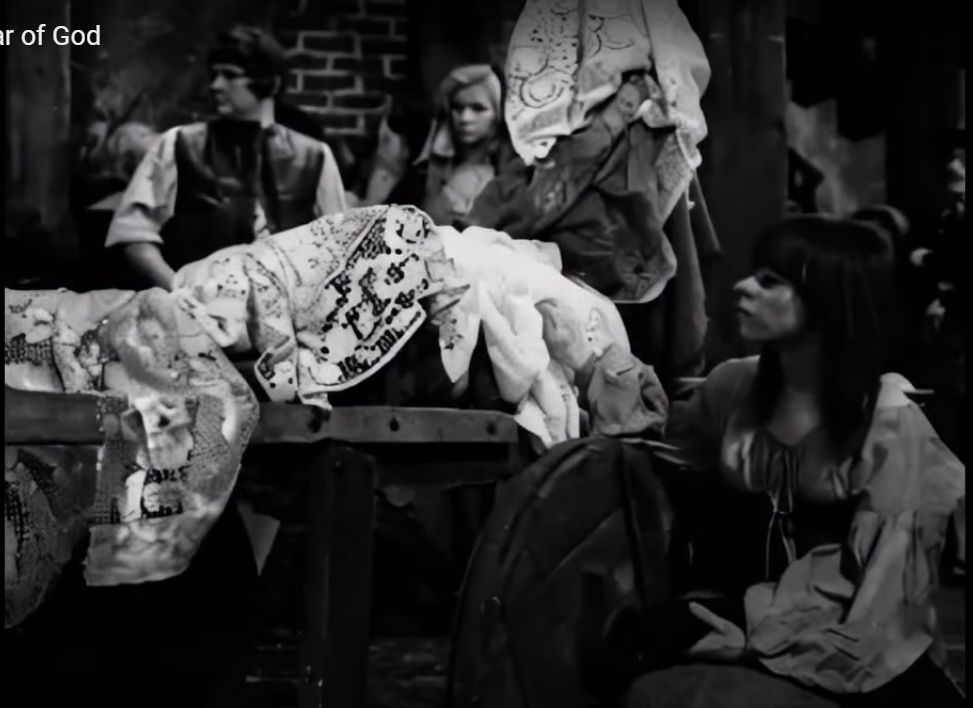
Inside the group, Levine has shared around twenty videos. This includesall of “The Dalek Masterplan,” “The Massacre,” and “The Savages.” However for the remainder, you must make a donation of fifty pounds, to become a contributor to the series.
Once your donation is confirmed, you are authorized to join the separate contributors group, for contributors only. This is where all the current videos being made are released.
Except…. None of these videos are unavailable privately. Ian Levine has placed them all on Youtube. They are unlisted, so they cannot turn up in either a Google or YouTube search. However, if you have a direct link or URL to them, they are accessible to everyone. Unlike other systems like Patreon which restrict content to only certain subscribers, nothing stops these links being shared elsewhere.
And of course, these links are shared. In response, Levine has issued threats and warnings against other Facebook groups and leakers trying to destroy his vision. In his group, people support him and join in denouncing those who criticize his work or mock it. People outside the group in response denounce Ian Levine and his supporters.
One thing I hate about internet culture is the push for tribalism. This is the idea we are joined in a selective tribe and must fight the rivals to connect. Over time the views become more strict in supporting your own tribe, and rejecting the opposition, and the middle ground is lost.
In the case of Ian Levine’s group, this is best shown by the view of alternative animations of missing Doctor Who stories. All of these are seen as not as good as Levine’s AI reconstructions. Levine’s reconstructions are seen as the only correct way Doctor Who is meant to be.
Initially Ian Levine’s AI project aimed to complete the ten missing stories not completed by the BBC. The initial project recognised the slow time it took to animate missing stories, and focused on stories that were difficult and costly to animate with people. Very soon after, however, Levine denounced many of the prior animations as “Silly Scooby Doo Cartoons.” The project was quickly extended to include stories previously animated by the BBC. Levine’s argument appears to be Levine’s objections to story changes animation had included. These included adding a surprise image of the Master in “Fury from the Deep”, prior to his debut appearance. Given Levine’s history of making things for the BBC, with the hope the BBC would license them, there have been rumours Levine initially was hoping the BBC would license some of his AI recreations, which has not come to pass.
Levine presents his animations as the most authentic way to view the missing episodes. Therefore appreciation of official animated reconstructions are not allowed. A poster saying they enjoyed the animated version of “The Celestial Toymaker,” was informed by Levine tht anyone who enjoyed the animation was unwelcome. Common responses of new animations being announced are people accusing the BBC of ruining another story. When Levine had a fault pointed out in one of his stories by Frazer Hines, who played the second Doctor’s companion, Jamie, Levine’s first response was to accept that the animation had limitations, but insisted it was still better than any animation the BBC has made. Most of all, posters all reinforce the message that AI reconstructions are the true version of the lost stories and the BBC are fools for not paying for them.
- The Celestial Toymaker sees the Doctor and his companions separated when they come up against the Toymaker
- While the Doctor plays the Trilogic Game, Steven and Dodo are forced to play their own seemingly childish, but ultimately dangerous games, with the aim of being reunited and getting back to the TARDIS
- Who will be the first to make a false move in this battle of wits, and will the TARDIS ever escape the Toymaker’s snare Fans of Doctor Who have long lamented the loss of the original 1966 master recordings of all except one of The Celestial Toymaker
Last update on 2025-03-16 / Affiliate links / Images from Amazon Product Advertising API
In response to this, or provoking this, depending on your point of you, external Facebook groups and YouTube channels are highly critical of the AI reconstructions. Some videos see them as threats, preventing the BBC from every investing in animation involving real people. Some hav dismissed the project as a scam.
So with such strong opinions on both sides, it’s time to actually watch them.
The AI Reconstructions
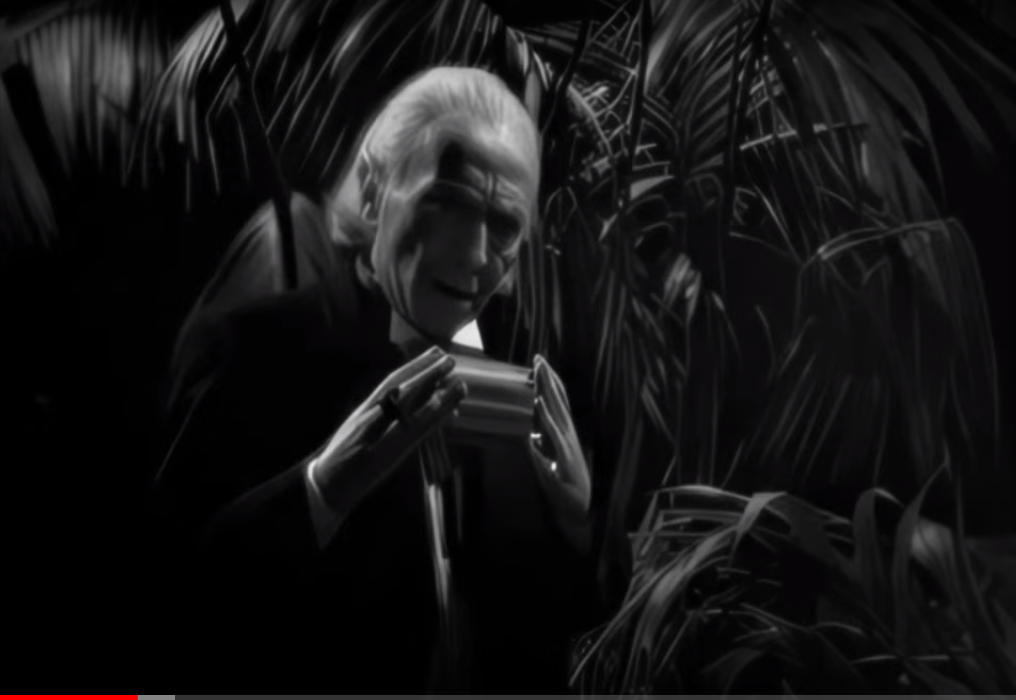
My first response on watching is they’re not that bad, but they’re not that good. Animation varies wildly in quality from story to story, making it hard to tell an overall trend towards or away from quality. However there are some good examples of how to recreate a story. “The Massacre” and “The Dalek Masterplan” for instance are incredible to watch. “The Savages” on the other hand is laughingly bad.
I chose to mostly focus on the stories not yet officially animated, so as to judge these stories by their own merit rather than compare to other animated versions of the same stories. However, it’s interesting the similarities that occur between the official animations and AI reconstructions. Non human characters (Particularly Daleks) look and move great, but people largely do not.
Animating People
Across most forms of Missing episode recovery, whether AI or human drawn, the difficulty is always animating people to show emotions and movement. Many of the official BBC animations often leave characters looking like stick figures bobbing up and down.
However one of the key things the official reconstructions provide is consistency. A human being develops a pre-existing model for characters, and because of this, these characters stay consistent over time.
AI on the other hand appears to forget things, or lose focus unless properly guided. People’s faces can change dramatically from shot to shot to the point, as in “The Savages” characters can be unrecognizable. This means, unlike with official animations, I often had to follow a story summary to figure out what was going on.
AI also forgets smaller things that make people seem human. In “The Highlanders” for instance the Doctor’s companion Polly does not blink for most of episode one, despite being in shot. This is a small detail, but throws the story into the uncanny valley – characters involve look like people but they feel wrong based on how they act.
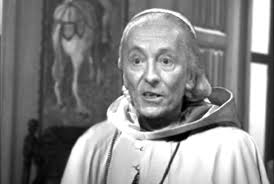
Movement is a struggle for all reconstructions because human movement is difficult to animate. Once again, “The Massacre” demonstrates small examples of movement than seem fluid, particularly in the first episode. “The Savages” on the other hand has main characters seemingly to perform scissor jump spread legged when the script call on them to walk.
How the animation occurs
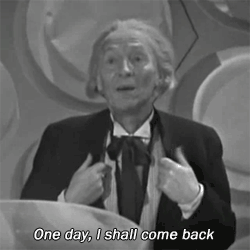
Having watched many of these animations, some of means AI generated these reconstructions became clearer. A lot of these animations, especially some of the later ones, do not actually generate much new material, instead using existing material in different ways. The First Doctor saying goodbye to Susan in the TARDIS, from Episode 6 of the Dalek Invasion of Earth, for instance is frequently re-used. This scene is redubbed multiple times in the reconstructions, when a missing story needs a scene of William Hartnell standing alone in the TARDIS.
Another method is using the telesnaps, and slightly animating the mouth and face. This creates a sense of fluidity and movement, but a very limited one. This is particularly noticeable in the Space Pirates. The resconstructions rely on switching between static photos of one cast member with mouths moving. On the one hand, this is no worse than the telesnaps, but the telesnaps were aware of their limitations, so often would use narration or subtitles to fill the gaps. However these reconstructions are presented as the most life like renditions of the missing episodes. As the original story did not have subtitles or narration, therefore, they are not allowed. As a result the story is incomprehensible.
Benefit – it exists
But despite the complaints, there is a significant benefit in these reconstructions. And that’s the fact that they exist.
Currently nine missing stories have not been officially animated by the BBC. I would love for all missing stories to be animated. However, the reality is most of the stories remaining might be too costly to animate.
Of the nine stories, six are pure historicals – stories with no science fiction elements apart from the TARDIS and its crew. These stories tended to have a larger number of human characters than stories with monsters, and a human being with their range of emotions is harder to animate than a Dalek.
Historicals also tend to have more detailed and complex scene change. A story in the future can replicate cold, grey corridors throughout a space colony. Historicals however must recreate significant locations in the world at particular times in history. Having to recreate 15th century France, for instance, is made up of multiple distinct locations. This makes historical stories more time consuming and therefore costly to animate. Therefore, despite stories being reanimated for almost twenty years now, the total number of historical episodes animated have been two – both missing episodes of the Reign of Terror.
For the remaining three stories, the limited human cast and isolated space station locations makes Wheel in Space relatively simple to animate. The Space Pirates, may also be animated as the story focusing mostly on space ships should make some aspects of the design easier to manage.
That just leaves The Dalek Masterplan¸ a massive twelve episode story, with a one episode prequel, where the Daleks chase the Doctor throughout time and space. The cast is huge, and while it is not a historical, the story would require animated sets of ancient Egypt during the building of the pyramids. None of this would be easy to do on the current BBC animation budget.
Therefore, it appears of the remaining nine missing stories, only two are highly likely to be animated.
And this is where AI can play a role. As AI does not rely much people, it means the costs to recreate a story like the Dalek Masterplan is significantly easier and cheaper than hiring a production studio to make it. While the end result is not as good as a professionally animated episode, for stories where hiring professional animations is not feasible, this is one way for people to observe a version of a story we otherwise cannot access.
Ultimately the frustrating thing about these reconstructions is they’re not allowed to be what they are. If they were simply an attempt to make otherwise lost stories more accessible, without any pretention or idea of superiority they would be fine. There are no shortages of fan made reconstructions, which vary in quality, but are all warmly received because they don’t pretend to be more than fan made animations. They are no better or worse than any other reconstructions.
If Levine’s reconstructions were presented with the same humbleness, the response would be more positive. If Leveine would present it as a project, and be accepting of others not needing to accpet them, there would be less retaliation online. But they aren’t presented as a fun way to view a loss episode. The reconstructions are presented as the only correct way to view the stories, superior than any other effort. In fact, he considers the stories no longer lost due to his AI reconstructions.
But by doing so, he puts the reconstructions on a pedestal of perfection. But they aren’t perfect, not by a long shot. By Leveine presenting these as perfect, he ultimately encourages people to notice how they are lacking by comparing to perfection. In comparison, more humble attempts of reconstruction, by presenting themselves as not the best, encourage people to notice what they do right.
So, try to enjoy the reconstructions for what they are. Some are surprisingly good – especially The Dalek Masterplan and The Massacre, and it’s a chance to see stories animated that you may not get to see animated elsewhere. But try to filter out all the rhetoric about how amazing and perfect they should be, and just enjoy them as they are.
 (2 / 5)
(2 / 5)
Related posts:
Movies n TV
Wheel of Time A Question of Crimson Is a Political Espionage Delight
Published
2 weeks agoon
March 17, 2025Episode two of Wheel of Time felt like the beginning of a long journey. Stories are unfolding, lives are changing, and blood is spilling.
Let’s discuss.
The story
We begin this episode in the past with Elayne’s mother, Queen Morgase. It turns out her rise to the throne was a bit, shall we say, cutthroat. So when she shows up at the White Tower, Siuan is concerned.
She might have reason to be, too.
Meanwhile, Rand, Egwene, Moiraine, Lan and Aviendha are in the Spine of The World. As they travel through some of the most breathtaking lands I have ever seen on a TV show, Egwene is plagued with nightmares. We think at first that’s just her trauma working itself through her system. But we soon find out that it might not be that straightforward.
Finally, Perrin returns home to heal after his hand is almost cut in half. But when he gets there he finds the town has been infested by Children of The Light. And they’re looking for him.
What worked
There was something heartwarming in this episode about political espionage and choking religious persecution. And that is Elayne’s relationship with her family.
I have consumed a lot of fantasy content with royal families. And I have never once heard a princess call her mother ‘Mum’. I’ve never seen royal siblings get along. And I have sure as hell never seen a princess have a good relationship with her step-parent.
This was refreshing. Even though Queen Morgase is kind of a horrible person she seems like a good mother. And that’s an unexpected delight.
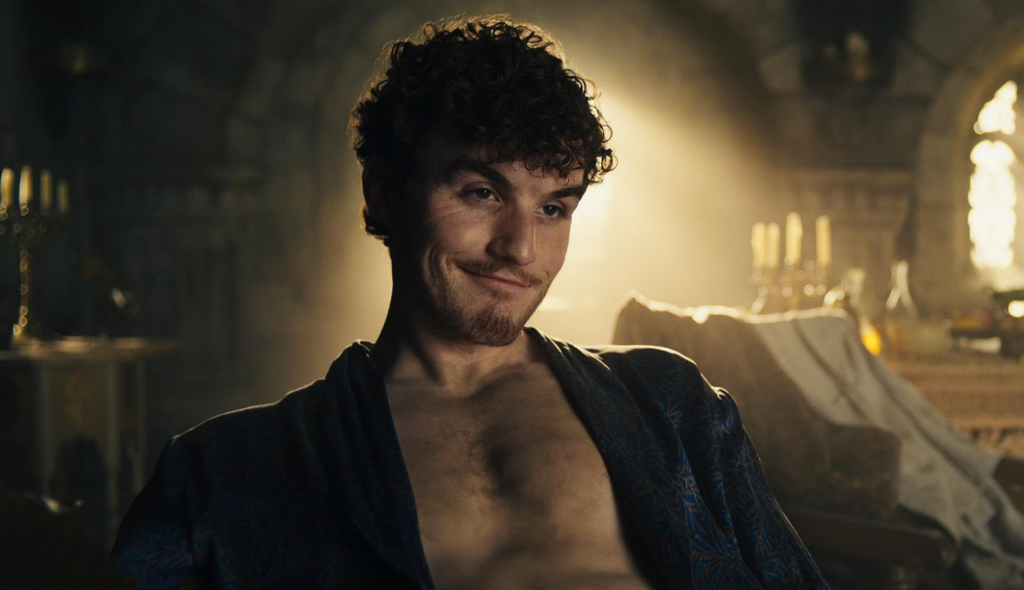
Of course, this is just one storyline among many. And while this can sometimes be overwhelming, in this case it wasn’t.
I’ll be honest, some of these storylines are going to drag for me. I know this because I’ve read some of the Wheel of Time books and I have an idea that not all the characters exactly pique my interest.
No one likes all the characters. No one likes all the storylines. While I am here for the political espionage between Queen Morgase and Siuan, not everyone likes it. While others might be fascinated with Selene trying to win Rand back, I couldn’t care less.
Having multiple storylines keeps everyone’s attention better. So long as things don’t get out of hand. Things can easily get out of hand. But this seems to be managed well.
So far.
What didn’t work
As I mentioned above, I’m not thrilled with Rand’s story at this point. And while it’s fine to not like a storyline when there are this many to choose from, it’s not fantastic that the one I like the least is the one involving our two main characters. And anytime we were with the team at the Spine of The World, the only thing that brought me joy was Moirain’s hat. It reminded me of Stockard Channing’s hat in Practical Magic.
The problem is that Rand is Charlie Brown with controversial magical powers. He is boring, serious, and pessimistic.
And yes, I understand that he has a heavy emotional burden and he’s the Dragon Reborn and that’s quite taxing and all. But let’s be fair, there isn’t a single person in this show that doesn’t have a heavy burden. And most of them manage to be fun occasionally.
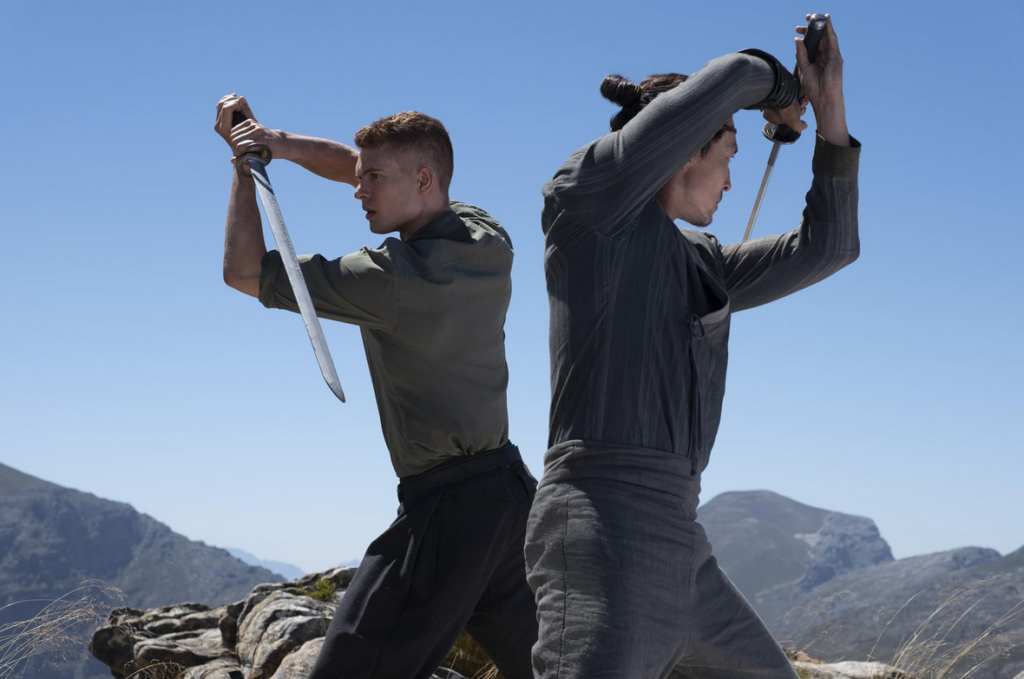
All that being said, this episode of Wheel of Time did exactly what it needed to do. It set up conflicts at each of the three locations. It established emotional ties between the characters and the events. And it established goals for everyone.
This was, in short, a solid episode. Not groundbreaking, not mind-blowing or life changing. It was simply good. It was entertaining and moved the plot forward.
Well done.
 (3.5 / 5)
(3.5 / 5)
Wheel of Time is back for season three. There are mixed feelings regarding this. Last season, there were some serious pacing issues. And some serious sticking to the book’s storyline issues. But we’re two seasons in, and we don’t give up so easily. So let’s dive into episode one, To Race the Shadow.
By the way, I highly recommend watching this episode with the subtitles on. You’ll see why.
The story
We begin this episode with Liandrin facing a trial of sorts for her rampant betrayal. She does her best to gaslight her Aes Sedai sisters into thinking that Siuan Sanche is the real traitor.
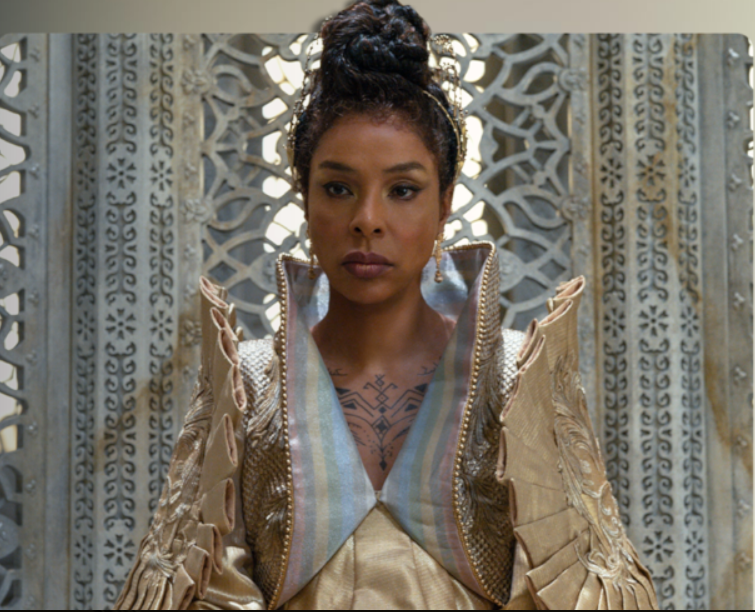
When that doesn’t work, she reveals how many Black Aes Sedai have actually infiltrated the tower.
Spoiler, it’s a lot.
In the aftermath, our whole team gathers to drink and enjoy one night of relaxation before they head out to the Tear to form an army for Rand. All is going well until they’re attacked by myriad creatures and a sentient axe.
What worked
This episode was long. It had a run time of an hour and eleven minutes. And a lot of that run time was spent in heavy dialog scenes.
Fortunately, these were well-done scenes.
If you’re going to have a lot of talking scenes, there are good ways and bad ways to do it. Last season, we saw lots of examples of the bad way to do it. But this episode did it well. For one thing, other things were going on while conversations were taking place. The characters are drinking, playing games, walking through an interesting city. And the scenes themselves didn’t stretch out. They weren’t repetitive. We heard what the character had to say, then we moved on.
It was also nice that the point of these scenes wasn’t just info dumps. We had character development. We had romantic interactions. We had plot development and foreshadowing.
Overall, this episode felt like what it was. A moment of calm before a storm.
Taking a step back, I’d be remiss if I didn’t address the fight scene at the start of the episode. Because it was epic.
The magic looked amazing. The martial arts that went along with it looked fantastic. The costumes were beautiful. It was just incredibly fun to watch.
More than that, it was emotional. We lost some characters in that fight that were important. And it was clearly emotionally shattering for many of our characters, who found themselves betrayed by people they trusted.
So many of them.
It was a great way to open the season.
What didn’t work
Despite that, this episode wasn’t without its flaws.
First off, there were a lot of dialog scenes. And they were good scenes, as I’ve already discussed. But it was one after another after another. And when your episode is, again, an hour and eleven minutes, it’s maybe a little much to have so much chit-chat. Couldn’t some of these conversations, important as they were, have been moved to maybe another episode?
Finally, I want to talk about Egwene’s travel through the arches.
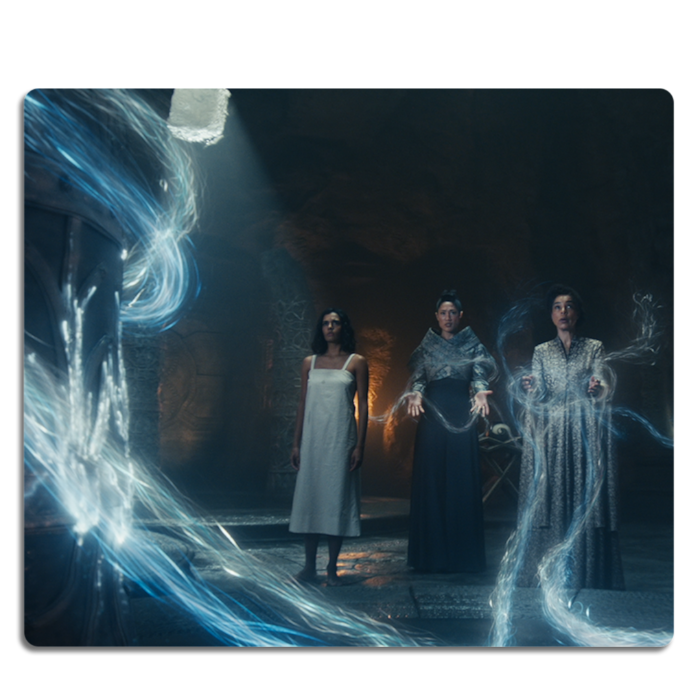
I feel like maybe there were some deleted scenes here. Because there must have been more to that visit than what we saw, right?
We could have seen Egwene battle Rand. That would have been badass and emotionally devastating. We could have seen her with a quiet life with Rand back home at the Two Rivers. We could have seen anything except for the quick clip of Rand in a bloody river, followed by Egwene being shoved back out in a bloody shift.
No products found.
Bad job. But at least it wasn’t an extended scene of Moiraine collecting bathwater, and then taking a bath while looking sad. If we’d started this season with another scene like that, it might have broken my brain.
Amazon dropped the first three episodes at once. So we’ll be back soon to talk about episode two. See you then.
 (4 / 5)
(4 / 5)

